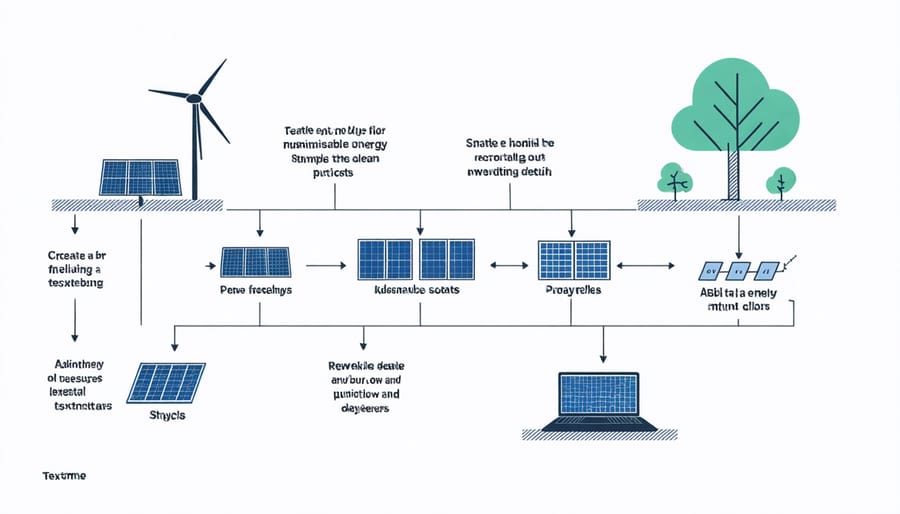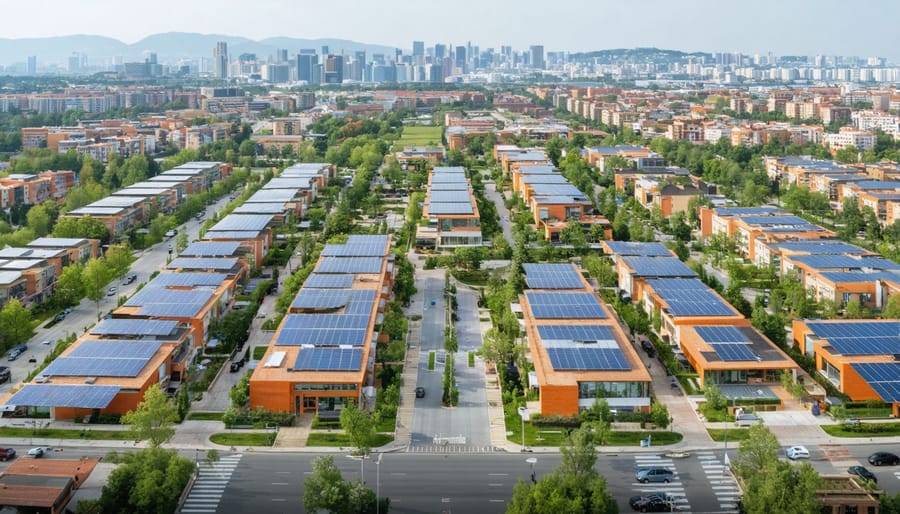Urban planning nonprofits stand at the forefront of transforming our cities into sustainable, equitable communities through innovative design and community-driven solutions. These organizations bridge the critical gap between municipal governments and local communities, leveraging expertise in architecture, engineering, and social science to reshape urban landscapes.
Operating with mission-driven focus rather than profit motives, these nonprofits tackle complex challenges from affordable housing development to green infrastructure implementation. Their unique position allows them to prioritize long-term community benefits over short-term financial gains, making them essential partners in sustainable urban development.
Recent success stories demonstrate their impact: from transforming abandoned lots into vibrant community spaces to implementing cutting-edge sustainable transportation solutions. These organizations have become instrumental in developing climate-resilient infrastructure while ensuring social equity remains central to urban planning decisions.
For construction professionals and industry stakeholders, understanding and partnering with urban planning nonprofits offers unprecedented opportunities to participate in transformative projects that shape the future of our cities. These collaborations not only enhance project outcomes but also contribute to building more resilient, sustainable urban environments that serve all community members.
The Strategic Impact of Nonprofit Organizations in Urban Energy Planning

Community Engagement and Advocacy
Urban planning nonprofits play a crucial role in bridging the gap between community needs and sustainable urban development initiatives. These organizations employ various strategies to ensure meaningful public participation, including community workshops, design charrettes, and digital engagement platforms. They frequently collaborate with local stakeholders to gather input on renewable energy projects and create implementable solutions that reflect community priorities.
Through policy research and advocacy, these nonprofits influence local and regional energy policies by presenting evidence-based recommendations to government officials. They often conduct detailed impact assessments and economic analyses to demonstrate the benefits of renewable energy adoption. Many organizations also develop educational programs and technical assistance initiatives to help communities understand and participate in energy planning processes.
Notable examples include organizations that have successfully advocated for solar access laws, community choice aggregation programs, and building energy performance standards. These efforts have resulted in measurable increases in renewable energy adoption and improved energy equity across diverse urban communities.
Research and Innovation Initiatives
Urban planning nonprofits are increasingly leading groundbreaking research initiatives that shape sustainable city development. Organizations like the Urban Land Institute and the Lincoln Institute of Land Policy conduct extensive studies on smart growth strategies, affordable housing solutions, and climate resilience in urban environments.
These research programs often combine academic rigor with practical applications, producing valuable data and insights that inform policy decisions and development practices. For instance, the American Planning Association’s Research Foundation regularly publishes comprehensive studies on emerging urban challenges, from transit-oriented development to green infrastructure implementation.
Innovation hubs established by nonprofits serve as testing grounds for new urban planning concepts. These facilities often partner with universities and private sector entities to pilot cutting-edge solutions in real-world settings. Notable examples include living laboratories for testing smart city technologies, experimental housing prototypes, and community-based planning tools.
Many nonprofits also develop open-source planning tools and methodologies that benefit smaller municipalities with limited resources. These innovations include digital mapping platforms, community engagement frameworks, and sustainability assessment tools that help standardize best practices across different urban contexts.
Case Studies: Successful Nonprofit-Led Energy Projects

Solar Implementation in Low-Income Communities
Nonprofit organizations are increasingly spearheading initiatives to implement solar power solutions in low-income urban communities, addressing both environmental sustainability and economic equity. These programs demonstrate how effective renewable energy integration can create lasting social impact while advancing clean energy adoption.
Recent data from the Solar Energy Industries Association shows that community solar projects led by nonprofits have grown by 121% since 2019, with particular success in urban areas. Organizations like Grid Alternatives and Solar United Neighbors have pioneered innovative financing models that eliminate upfront costs for residents while providing long-term energy savings of 50-70% on average.
Notable success stories include the Bronx Community Solar Initiative, which has installed 2.5 megawatts of solar capacity across 47 buildings, benefiting over 1,200 low-income households. The program’s workforce development component has trained 150 local residents in solar installation, creating sustainable employment opportunities within the community.
These initiatives typically employ a three-pronged approach:
1. Partnership development with local housing authorities and property owners
2. Implementation of innovative financing mechanisms, including revolving loan funds and power purchase agreements
3. Integration of workforce development programs to create local employment opportunities
Technical challenges often include aging infrastructure assessment, roof structural capacity evaluation, and optimization of panel placement in dense urban environments. Successful programs address these challenges through comprehensive site assessments and engineering solutions tailored to each community’s specific needs.
The most effective programs combine technical expertise with community engagement, ensuring long-term project sustainability through resident education and maintenance training. This approach has proven crucial for maximizing both energy generation potential and community benefits.
District Energy Systems Development
Nonprofit organizations have emerged as crucial facilitators in developing sustainable district energy systems across urban centers. The Copenhagen District Heating System, implemented through a partnership between the City of Copenhagen and nonprofit energy cooperative CTR, serves as a landmark example of successful nonprofit involvement in district-scale energy solutions.
In North America, the International District Energy Association (IDEA) has played a pivotal role in advancing community energy projects. Their work with the St. Paul District Energy system in Minnesota demonstrates how nonprofits can bridge the gap between public utilities and private stakeholders. This project now serves over 200 buildings and has reduced carbon emissions by 280,000 tons annually.
The Boston Medical District Energy Initiative, spearheaded by the Green Ribbon Commission, showcases how nonprofits can facilitate technical feasibility studies and stakeholder engagement. Their comprehensive approach included conducting engineering assessments, organizing community workshops, and developing innovative financing mechanisms that enabled project implementation.
Environmental Defense Fund’s District Energy Accelerator program has been instrumental in scaling up district heating and cooling solutions across multiple cities. Their technical assistance and capacity-building efforts have helped municipalities overcome common barriers to implementation, including regulatory challenges and initial capital requirements.
These nonprofit-led initiatives typically achieve 30-50% greater energy efficiency compared to individual building systems, while reducing operational costs by 15-25%. Success factors include early stakeholder engagement, comprehensive feasibility studies, and innovative financing models that combine public and private capital sources.

Funding and Partnership Models
Grant Programs and Public-Private Partnerships
Urban planning nonprofits leverage diverse funding mechanisms to support their initiatives, primarily through government grants and strategic public-private partnerships. Federal programs like the Community Development Block Grant (CDBG) and HOME Investment Partnerships provide substantial financial support for neighborhood revitalization and affordable housing projects.
These organizations often collaborate with private sector entities through structured partnerships that combine philanthropic goals with sustainable business models. Major corporations frequently contribute through their corporate social responsibility programs, offering both financial resources and technical expertise. Foundation grants from organizations like Ford Foundation and Bloomberg Philanthropies have become instrumental in funding innovative urban solutions.
Many successful nonprofits implement a hybrid funding model, combining traditional grants with revenue-generating activities. This approach might include consulting services, educational programs, or technical assistance to municipalities. The Enterprise Community Partners model demonstrates how organizations can leverage private capital markets while maintaining their nonprofit mission.
Public-private partnerships often take the form of joint development agreements, where nonprofits work alongside developers and local governments to ensure community benefits in major urban projects. These arrangements typically include provisions for affordable housing, public spaces, and sustainable infrastructure.
To maintain long-term sustainability, leading nonprofits are increasingly exploring impact investing and social innovation bonds. These mechanisms allow organizations to access capital markets while measuring and delivering specific social outcomes, creating a more resilient funding structure for urban development initiatives.
Sustainable Finance Models
Urban planning nonprofits are increasingly adopting innovative financing models to ensure long-term sustainability and maximize their impact in renewable energy initiatives. The traditional grant-dependent model is evolving towards a more diversified funding approach that combines multiple revenue streams.
One effective model is the revolving loan fund, where initial investments in renewable energy projects generate returns that are reinvested into future initiatives. This self-sustaining cycle has proven successful in solar panel installations across multiple urban developments, with typical returns ranging from 5-8% annually.
Public-private partnerships (PPPs) have emerged as another crucial financing mechanism. These arrangements allow nonprofits to leverage private sector capital while maintaining their social mission. For example, several organizations have successfully implemented community solar projects through PPP structures, enabling broader access to clean energy while generating steady revenue streams.
Green bonds and environmental impact investments are gaining traction, particularly for larger-scale urban renewable projects. These financial instruments attract socially conscious investors while providing nonprofits with necessary capital at favorable terms. Recent market data shows that green bonds issued by urban planning nonprofits have achieved oversubscription rates of 200-300%.
Performance-based contracts represent another innovative approach, where nonprofits receive funding based on achieved environmental outcomes. This model has proven particularly effective in energy efficiency projects, with some organizations reporting cost savings of up to 30% that can be reinvested in future initiatives.
These sustainable finance models not only ensure organizational longevity but also demonstrate the viability of renewable energy projects to commercial stakeholders.
Future Outlook and Recommendations
As urban planning nonprofits navigate an increasingly complex landscape, several emerging trends are shaping their future trajectory. The acceleration of the energy transition and technological advancement demands a more sophisticated approach to urban development and community engagement.
Data-driven decision-making is becoming paramount, with nonprofits increasingly leveraging Geographic Information Systems (GIS), artificial intelligence, and predictive analytics to optimize urban planning solutions. These technologies enable more precise community needs assessments and impact measurement, crucial for securing future funding and demonstrating value to stakeholders.
Climate resilience will continue to dominate urban planning priorities, necessitating stronger partnerships between nonprofits and local governments. Organizations must develop expertise in green infrastructure, sustainable building practices, and adaptive design strategies to address growing environmental challenges effectively.
To remain effective and sustainable, urban planning nonprofits should consider the following strategic recommendations:
1. Diversify funding sources through innovative financing mechanisms, including social impact bonds and public-private partnerships, reducing dependence on traditional grants.
2. Invest in digital capabilities and data analytics infrastructure to enhance decision-making processes and demonstrate measurable impact to stakeholders.
3. Develop specialized expertise in emerging areas such as smart city technologies, sustainable transportation systems, and climate adaptation strategies.
4. Foster stronger collaborations with academic institutions and private sector partners to access cutting-edge research and technical resources.
5. Implement comprehensive community engagement strategies utilizing both digital platforms and traditional outreach methods to ensure inclusive planning processes.
The future success of urban planning nonprofits will largely depend on their ability to adapt to changing demographic patterns, technological advancements, and environmental challenges. Organizations that embrace innovation while maintaining their core mission of community service will be best positioned to drive positive urban transformation in the coming decades.
Looking ahead, these organizations must also prepare for increased scrutiny of their operations and impact metrics. This necessitates the development of robust evaluation frameworks and transparent reporting mechanisms to maintain stakeholder trust and secure continued support for their initiatives.
Nonprofit organizations have emerged as indispensable catalysts in advancing renewable energy solutions within urban planning frameworks. Through their dedicated efforts, these organizations bridge crucial gaps between public policy, private sector initiatives, and community needs. Their impact extends beyond mere advocacy, as demonstrated by successful implementations of solar installations, energy-efficient building retrofits, and sustainable infrastructure projects across numerous cities.
The unique position of nonprofits as neutral intermediaries enables them to facilitate collaborative partnerships, securing vital funding streams while ensuring equitable distribution of renewable energy benefits across diverse urban communities. Their technical expertise, combined with deep understanding of local contexts, has proven instrumental in overcoming implementation challenges and fostering innovation in sustainable urban development.
Looking ahead, nonprofits will continue to play a pivotal role in shaping the future of urban renewable energy integration. Their ability to mobilize stakeholders, leverage resources, and drive policy reform positions them as essential partners in achieving ambitious climate goals. As cities face increasing pressure to transition to sustainable energy systems, the expertise and dedication of nonprofit organizations will remain crucial in developing and implementing effective solutions.
The sustained success of urban renewable energy initiatives largely depends on the continued involvement of nonprofit organizations, whose commitment to environmental sustainability, social equity, and technical excellence drives meaningful progress in urban transformation. Their contributions will remain vital as cities worldwide strive to create more resilient, sustainable, and energy-efficient urban environments.

